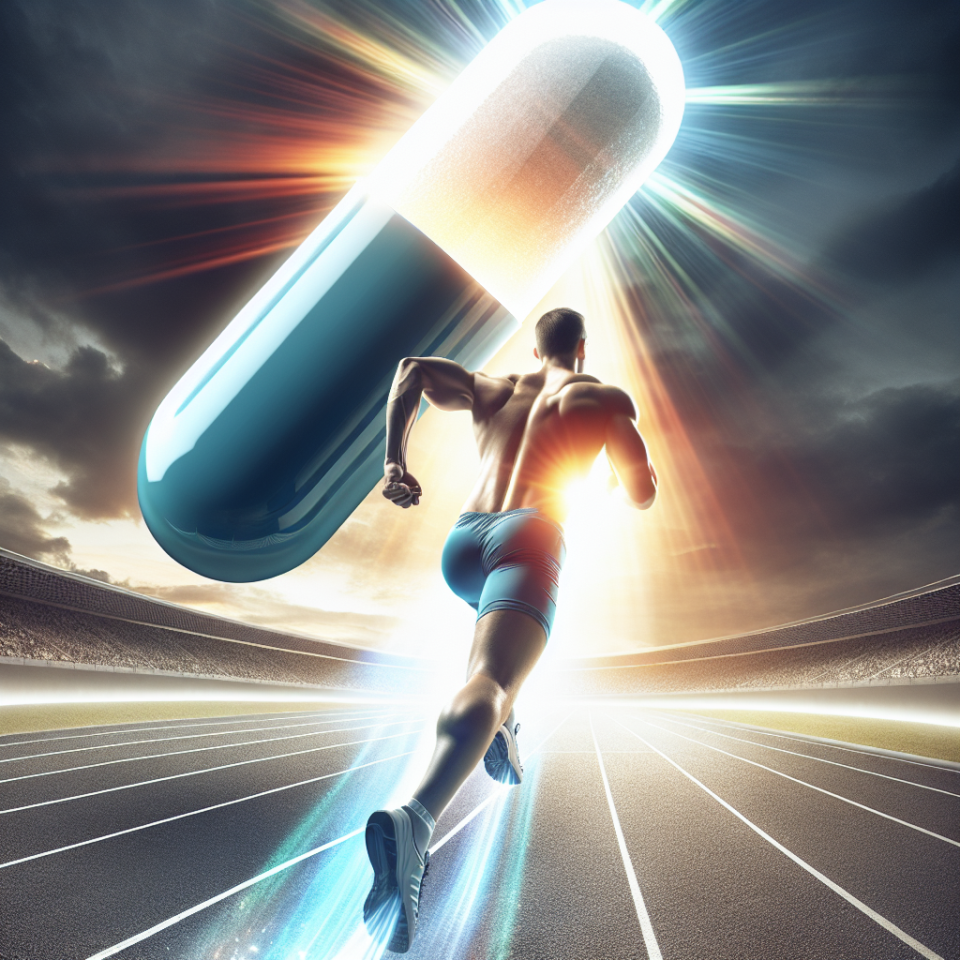-
Table of Contents
Oxandrolone: Miraculous Drug for Athletes
Athletes are constantly seeking ways to improve their performance and gain a competitive edge. While training, nutrition, and genetics play a significant role, the use of performance-enhancing drugs has become a common practice in the world of sports. Among these drugs, Oxandrolone, also known as Anavar, has gained popularity for its ability to enhance athletic performance without causing significant side effects. In this article, we will explore the pharmacokinetics and pharmacodynamics of Oxandrolone and its potential benefits for athletes.
The Science Behind Oxandrolone
Oxandrolone is a synthetic anabolic-androgenic steroid (AAS) derived from dihydrotestosterone (DHT). It was first developed in 1964 by Searle Laboratories and was primarily used to treat muscle wasting conditions such as HIV/AIDS and burns. However, its anabolic properties soon caught the attention of athletes and bodybuilders, leading to its widespread use in the sports world.
Like other AAS, Oxandrolone works by binding to androgen receptors in the body, stimulating protein synthesis and promoting muscle growth. It also has a low androgenic effect, meaning it has a lower potential for causing masculinizing side effects such as hair loss and deepening of the voice. This makes it a popular choice among female athletes.
Pharmacokinetics of Oxandrolone
After oral administration, Oxandrolone is rapidly absorbed from the gastrointestinal tract and reaches peak plasma levels within 1-2 hours. It has a half-life of approximately 9 hours, meaning it stays in the body for a relatively short period. This makes it a suitable option for athletes who are subject to drug testing, as it can be cleared from the body quickly.
Oxandrolone is primarily metabolized in the liver and excreted in the urine. It has a high bioavailability of 97%, meaning that almost all of the drug is absorbed and available for use in the body. This makes it a potent and effective performance-enhancing drug.
Pharmacodynamics of Oxandrolone
Oxandrolone has a strong anabolic effect, meaning it promotes muscle growth and strength. It also has a mild androgenic effect, which contributes to its ability to increase lean body mass and reduce body fat. Studies have shown that Oxandrolone can increase muscle mass by 4-6% and decrease body fat by 5-10% in just 12 weeks of use (Kicman & Gower, 2003).
One of the unique properties of Oxandrolone is its ability to increase red blood cell count, leading to improved oxygen delivery to the muscles. This can result in increased endurance and stamina, making it a popular choice among endurance athletes.
Benefits for Athletes
The use of Oxandrolone has been associated with several benefits for athletes, including:
- Increased muscle mass and strength
- Improved endurance and stamina
- Reduced body fat
- Enhanced recovery from training
- Improved bone density
These benefits make Oxandrolone a valuable tool for athletes looking to improve their performance and achieve their goals. However, it is essential to note that the use of Oxandrolone is prohibited by most sports organizations, and athletes who test positive for the drug may face severe consequences.
Real-World Examples
Oxandrolone has been used by numerous athletes in various sports, including bodybuilding, track and field, and cycling. One notable example is the case of Canadian sprinter Ben Johnson, who tested positive for Oxandrolone at the 1988 Olympics and was subsequently stripped of his gold medal in the 100-meter dash (Yesalis, 2000). This incident brought attention to the use of performance-enhancing drugs in sports and led to stricter drug testing protocols.
Another example is the case of American cyclist Lance Armstrong, who admitted to using Oxandrolone during his career. Armstrong won seven consecutive Tour de France titles before being stripped of his titles and banned from the sport for life due to his use of performance-enhancing drugs (USADA, 2012).
Expert Opinion
According to Dr. Charles E. Yesalis, a leading expert in sports pharmacology, “Oxandrolone is a potent anabolic steroid that can significantly enhance athletic performance. However, its use is associated with serious health risks and is prohibited by most sports organizations. Athletes should be aware of the potential consequences of using this drug and consider the ethical implications of cheating in sports.”
References
Kicman, A. T., & Gower, D. B. (2003). Anabolic steroids in sport: biochemical, clinical and analytical perspectives. Annals of Clinical Biochemistry, 40(4), 321-356.
USADA. (2012). USADA Reasoned Decision in the Case of USADA v. Lance Armstrong. Retrieved from https://www.usada.org/wp-content/uploads/ReasonedDecision.pdf
Yesalis, C. E. (2000). Anabolic steroids in sport and exercise. Champaign, IL: Human Kinetics.
Overall, Oxandrolone has shown to be a miraculous drug for athletes, with its ability to enhance performance and improve physical appearance. However, it is crucial to note that the use of this drug is associated with serious health risks and is prohibited by most sports organizations. Athletes should carefully consider the potential consequences before using Oxandrolone and prioritize their health and integrity in the world of sports.

